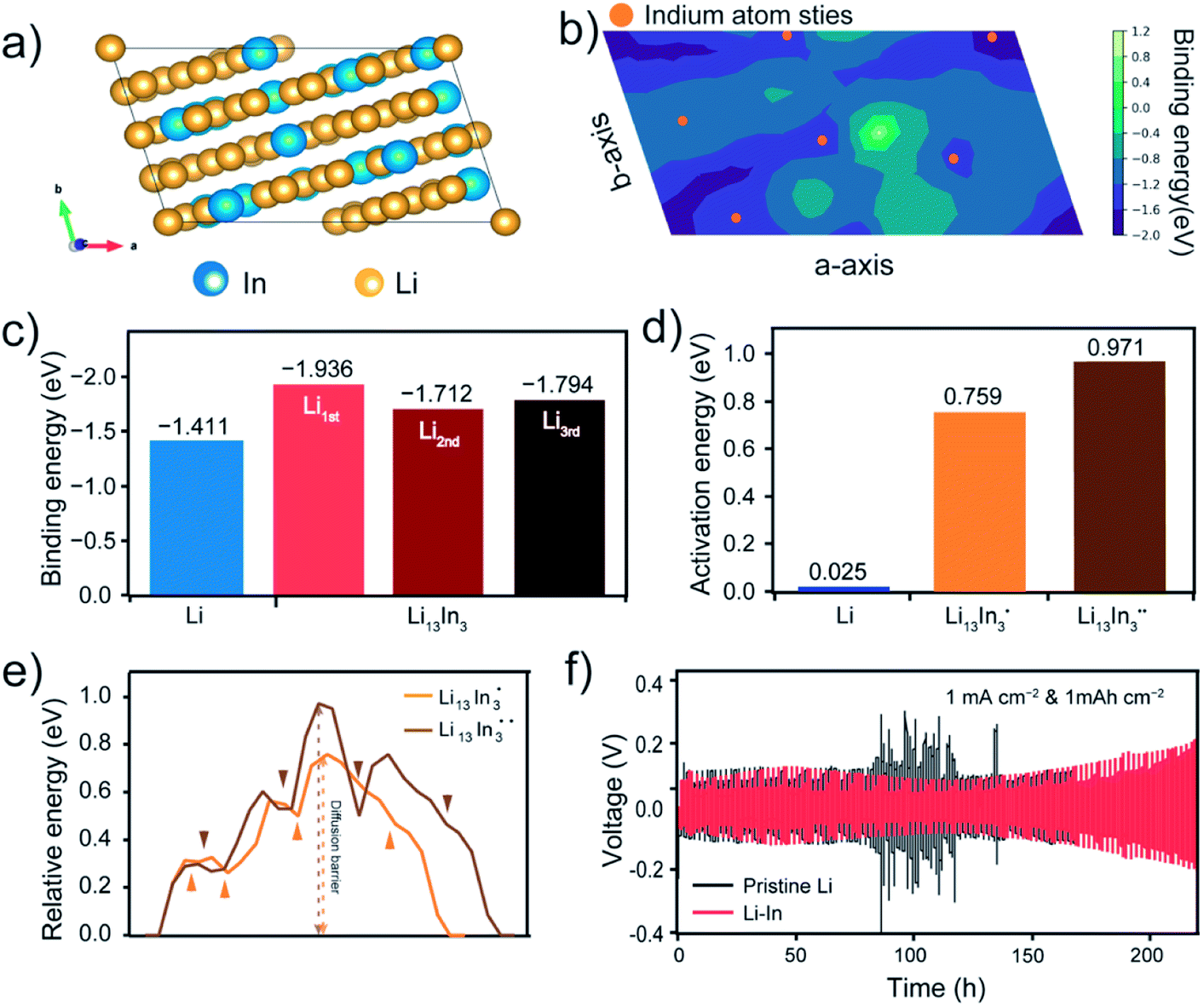Li-In alloy anode and Nb2CTX artificial solid-electrolyte interphase for practical Li metal batteries
-
Authors :
Seung Hun Lee, Mun Sek Kim, Jung-Hoon Lee, Ji-Hyun Ryu, Vandung Do, Byeong Gwon Lee, Woong Kim, Won Il Cho
-
Journal :
J. Mater. Chem. A
-
Vol :
10
-
Page :
4157
-
Year :
2022

Abstract
Lithium metal (Li) has received growing attention for use in rechargeable electrochemical cells with various types of cathode owing to its potential as a high-capacity anode. However, continuous electrochemical reactions and uncontrolled electrodeposition at the surface of the anode hinder its practical usage. Here, through the coupling of a Li–In alloy as an anode material with Nb2CTX (an MXene) as an artificial solid-electrolyte interphase (Nb2CTX Li–In), we achieved a superior cycling performance to overcome the existing problems of Li anodes. The Li diffusion behavior and the interactions between the Nb2CTX Li–In alloy anode and Li were examined using density functional theory calculations, and it was confirmed that the Nb2CTX Li–In provides high Li affinities and controls Li migration. Then, the material characteristics of the Nb2CTX ASEI and Li–In alloy were respectively analyzed, and the Li electrodeposition behavior and improved reversibility were confirmed via various electrochemical experiments. The electrochemical performances of the Nb2CTX Li–In alloy anode were evaluated paired with a LiNi0.8Co0.1Mn0.1O2 cathode (NCM811), and the capacity was stably maintained for >450 cycles. Finally, a Nb2CTX Li–In pouch cell (∼272 W h kg−1, 500 W h L−1) was fabricated with a practical composition of high loading NCM811 (4.1 mA h cm−2) and a limited amount of electrolyte (2.4 μL (mA h)−1), and was operated for >200 cycles. The Nb2CTX Li–In alloy anodes exhibit a high reversibility and stability for Li deposition and migration during the repeated cycling of lithium metal batteries.
















